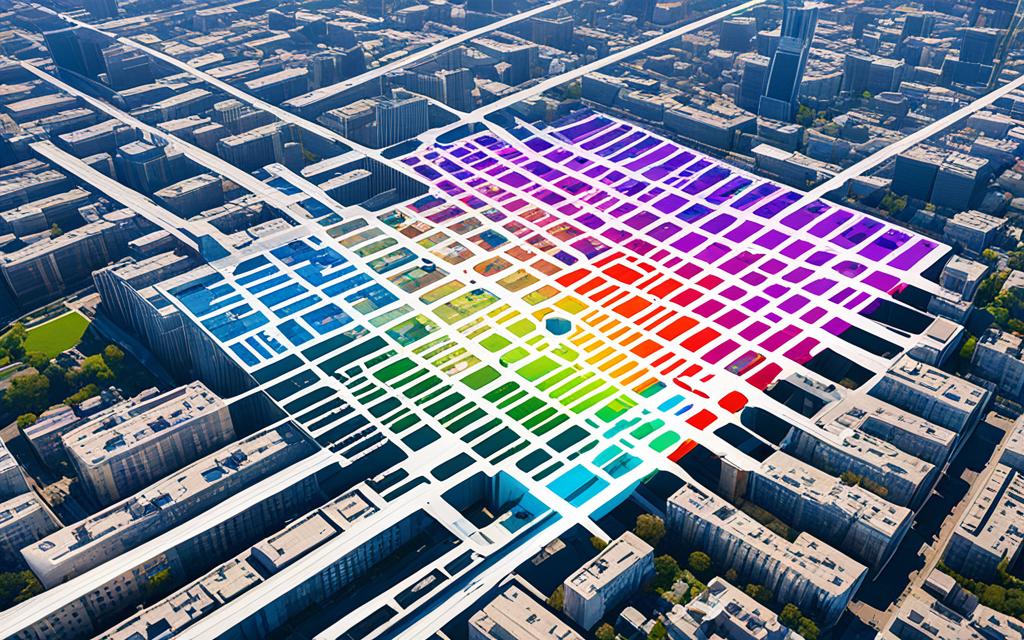Network slicing is a revolutionary technology that aims to provide personalized connectivity solutions by creating multiple networks or slices on top of a single shared network. With the advent of 5G, network slicing has become a practical reality, enabling tailored connectivity for a wide range of applications.
In this article, we will explore the benefits of fixed wireless network slicing and its role in delivering versatile and efficient connectivity. Whether you’re a healthcare provider seeking real-time data transmission or an entertainment company looking to enhance augmented reality experiences, fixed wireless network slicing offers immense potential.
Understanding 5G Network Slicing
5G network slicing is a groundbreaking technology that enables the creation of multiple customized networks, or slices, on a shared network infrastructure. Each slice is designed to meet specific requirements, providing tailored connectivity and data processing capabilities to different types of users. This flexibility revolutionizes mobile networks, ushering in a new era of customized connectivity solutions.
With 5G network slicing, service providers can deliver personalized experiences that perfectly align with the diverse needs of their customers. Whether it’s high-bandwidth connections for streaming services, low-latency networks for real-time gaming, or ultra-reliable connections for mission-critical applications, network slicing allows for precise customization.
The benefits of 5G network slicing are far-reaching. It empowers industries such as healthcare, entertainment, and industrial settings to optimize their operations by leveraging tailored connectivity solutions. From remote patient monitoring in healthcare to immersive augmented reality experiences in entertainment, network slicing opens up endless possibilities.
5G network slicing is a game-changer for businesses and consumers alike. It enables service providers to go beyond a one-size-fits-all approach and deliver customized connectivity solutions that address the unique requirements of different applications and industries.
Network slicing operates on the principles of virtualization, where each slice is allocated dedicated network resources such as bandwidth, latency, security, and quality of service (QoS). These resources are efficiently managed and optimized to ensure consistent and reliable performance. This dynamic resource allocation enhances overall network efficiency and enables service providers to maximize the utilization of their infrastructure.
Advantages of 5G Network Slicing:
- Customized connectivity solutions tailored to specific user requirements
- Efficient resource allocation for optimal network performance
- Enhanced flexibility and scalability
- Enables the provision of diverse services on a shared infrastructure
- Opens up new business opportunities and revenue streams
5G network slicing represents the future of connectivity, empowering organizations to deliver highly specialized services and experiences. Its ability to provide customized connectivity solutions for different industries and applications positions it as a key enabler for digital transformation.
| Industry | Application |
|---|---|
| Healthcare | Remote patient monitoring, telemedicine |
| Entertainment | Augmented reality, virtual reality |
| Industrial | Machine-to-machine communication, security monitoring |
The Technical Foundation: How It Works
Network slicing is made possible through the utilization of virtualization technology. This innovative approach enables the creation of independent networks or slices within a shared network infrastructure. Each slice is designed to cater to specific requirements, allowing for a highly customizable network experience.
By implementing virtualization technology, network operators can allocate resources efficiently across different slices, ensuring that each service receives the necessary resources to perform optimally. This means that critical services with low latency demands can be prioritized, while high-bandwidth applications can be allocated the appropriate resources to support their data-intensive needs.
This efficient resource allocation is crucial in delivering an exceptional network experience. It allows for the seamless coexistence of various applications and services within the same network infrastructure, without compromising the performance and reliability of each individual slice.
Furthermore, virtualization technology enables enhanced security measures within network slices. Each slice can have its own isolated security protocols, providing a robust and secure environment for the services it supports. This isolation prevents unauthorized access and ensures the confidentiality and integrity of data.
Overall, the technical foundation of network slicing, built upon virtualization technology, empowers network operators to tailor connectivity solutions according to the diverse needs of different applications. The ability to create independent slices within a shared network infrastructure enables efficient resource allocation, ensuring optimal performance, and a highly customizable network experience.
Benefits of Virtualization Technology in Network Slicing:
- Customizable and tailored network experiences
- Efficient resource allocation for optimal performance
- Enhanced security measures through isolation
The Role of the 5G Core in Network Slicing
The 5G Core plays a pivotal role in enabling network slicing, providing the necessary intelligence and orchestration to create, manage, and terminate slices. As the brain behind this revolutionary technology, the 5G Core ensures that each slice meets the diverse requirements of its users.
Network orchestration is a key function of the 5G Core, allowing network operators to efficiently allocate resources and dynamically adapt the network to changing demands. By leveraging network orchestration capabilities, operators can optimize the performance and efficiency of each slice, ensuring that they deliver the desired level of service quality.
With the 5G Core, network operators can cater to a wide range of diverse requirements. For example, in emergency services, where reliability is paramount, a dedicated network slice can be created to ensure uninterrupted communication and data transmission. On the other hand, for live virtual reality content, a separate slice can be provisioned with low latency and high throughput to deliver an immersive and uninterrupted user experience.
The 5G Core also enables dynamic slice management, allowing operators to monitor and adjust the resource allocation and performance of each slice in real time. This flexibility ensures that the network can adapt to changing traffic patterns and user demands, optimizing the overall network efficiency.
The 5G Core acts as the backbone of network slicing, providing the necessary intelligence and orchestration for creating tailor-made slices that meet diverse requirements.
Furthermore, the 5G Core supports the coexistence of multiple slices on a shared network infrastructure, enabling efficient utilization of network resources. By leveraging this capability, network operators can achieve cost savings and maximize the return on investment for their network infrastructure.
Overall, the 5G Core empowers network operators to deliver versatile and efficient connectivity through network slicing. By providing the necessary intelligence, orchestration, and management capabilities, the 5G Core ensures that each slice is optimized to meet diverse requirements, catering to the specific needs of different applications and industries.

| Slice Type | Key Characteristics |
|---|---|
| Emergency Services Slice | High reliability, low latency |
| Virtual Reality Slice | High bandwidth, low latency |
| IoT Slice | Massive connectivity, low power consumption |
| Enterprise Slice | End-to-end security, customizable QoS |
| Smart City Slice | Low latency, high scalability |
The Business Case for Network Slicing
Network slicing not only offers significant technical advantages but also presents lucrative business opportunities for network operators. By providing customized connectivity solutions that cater to diverse needs, network operators can unlock new revenue streams and foster innovation in various sectors.
Delivering Tailored Connectivity
With network slicing, operators can deliver tailored connectivity solutions to different industries, enabling them to meet specific requirements and enhance their operations. From healthcare to entertainment, network slicing opens up new avenues for creating value and delivering exceptional connectivity experiences. Businesses can leverage this customizable technology to meet the unique demands of their operations and provide enhanced services to their customers.
“Network slicing represents a significant evolution in the way we approach connectivity. It allows us to deliver highly customized solutions that align with the diverse needs of different industries, creating new business opportunities and revenue streams.”
Unlocking New Revenue Streams
By offering customized connectivity solutions through network slicing, operators can tap into previously untapped markets and monetize their services in innovative ways. For example, in the healthcare sector, network slicing can support remote patient monitoring, telemedicine, and real-time data transmission, opening up revenue opportunities for healthcare service providers.
In the entertainment industry, slices with high bandwidth and low latency can enhance augmented reality (AR) and virtual reality (VR) experiences, creating new revenue streams for content creators and service providers. Network slicing also presents opportunities in industrial settings by supporting machine-to-machine communication and enabling advanced security monitoring, helping businesses optimize their operations and generate additional revenue.
Creating Value and Fostering Innovation
Customized connectivity solutions provided by network slicing can drive value creation and foster innovation across various industries. By addressing specific requirements, network slicing enables businesses to explore new avenues, improve efficiency, and innovate their offerings.
| Industry | Benefits |
|---|---|
| Healthcare | Enhanced remote patient monitoring Real-time data transmission Support for telemedicine |
| Entertainment | Improved augmented reality (AR) and virtual reality (VR) experiences High bandwidth for streaming services Low latency for immersive gaming |
| Industrial | Support for machine-to-machine communication Advanced security monitoring Optimized IoT connectivity |
By leveraging the benefits of network slicing, businesses can differentiate themselves in their respective industries, drive growth, and stay ahead of the competition.
Creating Value in Diverse Industries
The potential applications of network slicing span across different sectors.
In Healthcare
Network slicing can support remote patient monitoring with real-time data transmission, enhancing the quality of care and improving patient outcomes.
In the Entertainment Industry
Slices with high bandwidth and low latency can enhance augmented reality and virtual reality experiences, delivering immersive and responsive content to users.
In Industrial Settings
Network slicing can benefit industrial settings by supporting machine-to-machine communication and security monitoring, enabling efficient operations and reducing downtime.
By leveraging the capabilities of network slicing in these industries, organizations can unlock innovative solutions and create value for their customers and stakeholders.
| Industry | Applications |
|---|---|
| Healthcare | Remote patient monitoring |
| Entertainment | Augmented reality and virtual reality experiences |
| Industrial | Machine-to-machine communication and security monitoring |
Conclusion
Fixed wireless network slicing offers a host of benefits, revolutionizing connectivity in terms of versatility and efficiency. This groundbreaking technology enables the creation of customized solutions that are tailored to the specific requirements of different applications and industries.
By harnessing the capabilities of 5G network slicing, service providers and network operators can unlock a world of opportunities. They can capitalize on the potential for revenue growth, create new value propositions, and deliver exceptional connectivity experiences to their customers.
With fixed wireless network slicing, businesses can cater to a broad range of industries, including healthcare, entertainment, and industrial settings. In healthcare, real-time data transmission through network slicing supports remote patient monitoring, enabling doctors to provide prompt care. In the entertainment industry, slices with high bandwidth and low latency enhance immersive augmented reality and virtual reality experiences. Moreover, in industrial settings, network slicing facilitates secure machine-to-machine communication and efficient security monitoring.
As the demand for customized connectivity solutions continues to grow, fixed wireless network slicing emerges as a game-changing technology. Its ability to address diverse requirements and deliver tailored connectivity propels the telecommunications industry forward, empowering businesses to thrive in a digital world.
FAQ
What is network slicing in fixed wireless?
Network slicing in fixed wireless refers to the technology that creates multiple networks or slices on a shared network, allowing for personalized connectivity and tailored solutions for different applications and industries.
How does 5G network slicing work?
5G network slicing utilizes virtualization technology to create independent networks or slices on a shared network. Each slice can have unique characteristics, such as latency, throughput, and security, enabling highly customizable connectivity experiences.
What is the role of the 5G Core in network slicing?
The 5G Core acts as the brain behind network slicing, orchestrating the creation, management, and termination of slices. It ensures that each slice meets the specific needs of its users, adapting the network to diverse requirements.
What are the business opportunities associated with network slicing?
Network slicing offers significant business opportunities for service providers and network operators. By providing tailored connectivity solutions, they can unlock new revenue streams and cater to diverse sectors, fostering innovation and value creation.
How can network slicing benefit different industries?
Network slicing has potential applications across different sectors. In healthcare, it can support remote patient monitoring with real-time data transmission. In the entertainment industry, it can enhance augmented reality and virtual reality experiences. In industrial settings, it can support machine-to-machine communication and security monitoring.
What are the benefits of fixed wireless network slicing?
Fixed wireless network slicing offers versatile and efficient connectivity solutions. It allows for customized solutions tailored to meet the specific needs of different applications and industries, leveraging the capabilities of 5G network slicing for exceptional connectivity experiences.



















